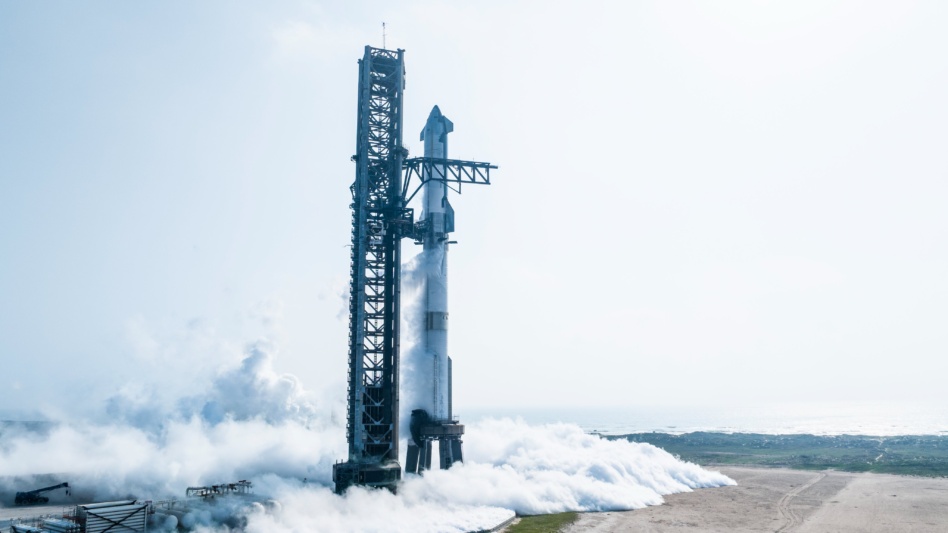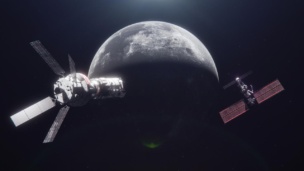With the emergence of Starship, New Glenn, and SLS rockets, NASA engineers are reimagining what is possible for future space telescopes and our search for life in the universe.
The Habitable Worlds Observatory (HWO) will be NASA’s first telescope designed for transport on super heavy-lift launch vehicles. The National Academies Astro2020 decadal survey recommended the project as its highest-priority next-gen telescope, with a deployment date slated for sometime in the 2040s.
Preliminary design discussions have commenced, and in May, NASA awarded BAE Systems, Lockheed Martin, and Northrop Grumman contracts worth a combined $17.5M to advance key stabilizing tech.
Hello out there (*echo 3x*): Habitable Worlds’ primary mission is in its name. The observatory seeks to answer one of life’s greatest questions: is anyone else out there?
Is our Pale Blue Dot unique in its ability to sustain life, or is life ubiquitous, but too faint to detect with existing instruments?
NASA is billing HWO as the first telescope “designed specifically to search for signs of life on planets orbiting other stars.”
By signs of life, the agency is referring to key chemical fingerprints like oxygen, water, carbon dioxide, and methane, which could indicate a potentially habitable world. The goal is for HWO to directly image at least 25 of these types of worlds.
Enter the big boys: The emergence of super heavy-lift launch vehicles is upending what is possible for next-gen telescopes, enabling engineers to overcome stringent mass constraints and design in significantly improved sensitivity, resolution, and cost controls.
HWO is still in initial discovery and design phases, but the telescope will likely have a six to eight-meter diameter mirror and host infrared, optical, and ultraviolet instruments.
Digging in a haystack: Imaging an exoplanet is difficult work. Stars shine 10 billion times brighter than their hosted planets, rendering alien worlds nearly invisible to even our most advanced observatories. For Habitable Worlds to work as envisioned and characterize exoplanets, the telescope must scale up, add advanced tech, and increase stability.
That is where Starship, SLS, and New Glenn come in. The super heavy-lift revolution breaks the mass constraint equation and is set to usher in a new era of super-telescopes.
Lee Feinberg, a NASA HWO lead and principal architect, told Payload he and his team are in communication with representatives from all three super heavy-lift launchers, having recently visited SpaceX to track Starship’s progress. “We are really rooting for big launchers. That is really, really important for us,” he said.
Starship, New Glenn, SLS
In 2021, the now-retired Ariane 5 launched the James Webb Telescope to Lagrange point L2. The rocket had a 5.4-meter diameter fairing and imposed a ~6,500 kg limit on the telescope’s weight.
In 2027, SpaceX’s Falcon Heavy is slated to launch the 4,166 kg Roman Space Telescope to L2. Falcon Heavy has a 5.2-meter diameter fairing, imposing even smaller fairing constraints than Ariane 5.
With Starship, SLS, and New Glenn rockets coming online, the calculus is set to change.
Super Heavy Lift Capabilities
- New Glenn
- Fairing: 7 meters
- Mass to LEO: 45T
- SLS
- Fairing: 8.4 meters (current) / 10 meters (planned)
- Mass to LEO: 95T
- Starship
- Fairing: 9 meters
- Mass to LEO:
- Starship V.2: ~100T reusable, 200T expendable
- Starship V.3: ~200T reusable, 400T expendable
The major caveat to the mass-to-orbit numbers is that LEO is much closer than L2. To transport HWO to its final home at the L2 point, a LEO-optimized Starship will likely need to be refueled multiple times in orbit for extra oomph. NASA is banking on this novel in-orbit refueling technology being proved out.
While super heavy-lift launch vehicles won’t alone bring down the cost of building sophisticated telescopes, they erase many of the mass and volume constraints that made the JWST exorbitantly expensive.
$10B James Webb Space Telescope
Since its launch in 2021, JWST has proven to be a gold mine for scientific discoveries, unlocking secret after secret of our universe.
Initial design work on JWST began in 1996. NASA originally targeted a 2010 launch date with a $1B – $3.5B budget. Human error, redesigns (25 years of interim tech advancement will do that), and new tech development led to a 10-year launch delay and a final price tag of $10B.
The near-impossible mass and volume constraints imposed by Ariane 5 on JWST drove a lot of issues.
“If you are too heavy to fit into a rocket, you have to reduce mass, which affects many aspects of system design, performance, and cost,” Laura Coyle, BAE Systems principal optical engineer in charge of HWO tech, told Payload.
Some degree of mass constraints, however, can be a net benefit as they force engineers to innovative and push technology forward.
“James Webb had 10 new inventions, primarily with its lightweight mirror, that were brought to bear to enable it to be launched,” Charlie Atkinson, JWST chief engineer at Northrop Grumman, told Payload. Northrop has been instrumental in building nearly all the great observatories, including the Compton Gamma Ray Observatory, Chandra X-ray Observatory, Spitzer Space Telescope, and now HWO.
New paradigm: With Habitable Worlds, engineers are dreaming big, licking their chops over the chance to take advantage of increased mass margin by adding a coronagraph, larger apertures, stabilizers, increased compute, additional instruments—you name it.
Incoming Habitable Worlds Observatory Innovation
NASA and Northrop told Payload that the preliminary Habitable Worlds team is considering building the telescope with a 6- to 8-meter mirror. (For comparison, JWST has a 6.5-meter mirror.)
The bigger, the better: The bigger the telescope, the finer the details, said NASA’s Feinberg. To see an Earth-like planet many light-years away, you need incredibly high resolution. You need a large mirror that can collect enough photons to determine chemical signatures.
“Diameter is a huge lever arm,” said Feinberg. “The larger the diameter, the better the resolution and sensitivity.”
Coronagraph: A key instrument for the Habitable Worlds Observatory’s success is its coronagraph, which blocks light from distant stars (similar to a solar eclipse effect)
“In order to see an exo-Earth—an Earth-like planet around a Sun-like star at a distance where liquid water can exist—the light from the host star must be suppressed while collecting the light from the faint planet,” Alison Nordt, Lockheed Martin’s director of space science instrumentation supporting HWO, told Payload.
Restless leg syndrome: For coronagraphs to home in on a star light years away, the telescope needs to be ultra stable, free from jitters and mirror motions. “James Webb is stable to tens of nanometers, and we need to get Habitable Worlds’ stability to tens of picometers level,” said Northrop’s Atkinson.
NASA’s recent batch of HWO contracts awarded to Northrop, Lockheed, and BAE focused on solving this stabilization problem.
The new technology will enable astrophysicists to image exoplanets directly, advancing humanity’s quest to find Earth-like worlds that could support life.
Rapidly Evolving Super Heavy Lift Launch Landscape
Given the speed at which Starship and New Glenn are developing, a 2040s Habitable Worlds deployment feels like a lifetime away.
Skate to where the puck is going: There’s a risk that NASA will spend 20 years building the HWO based on 2024 launch capability assumptions, only to see those mass and volume constraints be 2x higher by 2040—by then, rockets could boast 10+ meter fairings and 400T expendable launches.
Take Falcon 9, for example. Even after 14 years of service, SpaceX is still incorporating design improvements and improving the rocket’s mass-to-orbit capabilities.
“This is one of the real challenges,” said Feinberg. “How do you know when to make decisions? What’s important to us is being flexible and being able to take advantage of whatever turns out to be there.”
Future future telescopes: Casey Handmer, a former NASA JPL software system architect who founded CO2 converter startup Terraform Industries, believes NASA’s Habitable Worlds approach is far too conservative compared to what is possible in the new Starship paradigm.
Handmer told Payload that Starship enables telescopes to scale up to the point of surface-level exoplanet imaging—-perhaps “big enough that we can detect seasonal migration patterns” of creatures.
Is surface-level imaging possible? A telescope with that level of resolution would require a mirror multiple orders of magnitude larger than the one planned for HWO, in-space assembly, novel tech, and an Artemis program-like resource allocation—but he says “it is obviously technically possible.”
To pierce through the atmosphere and pick out coastlines, “you’d have to have a very, very large aperture,” Atkinson cautioned. Feinberg added that surface-level imaging would require a large in-space assembly operation and quantum technology.
First things first: Before all that, Habitable Worlds is up next. The groundbreaking telescope will leverage super heavy-lift launch capabilities to improve resolution, sensitivity, and stability. Following in the footsteps of Hubble, JWST, and other great observatories, the Habitable Worlds Observatory is poised to shed new light on our place in the universe.




